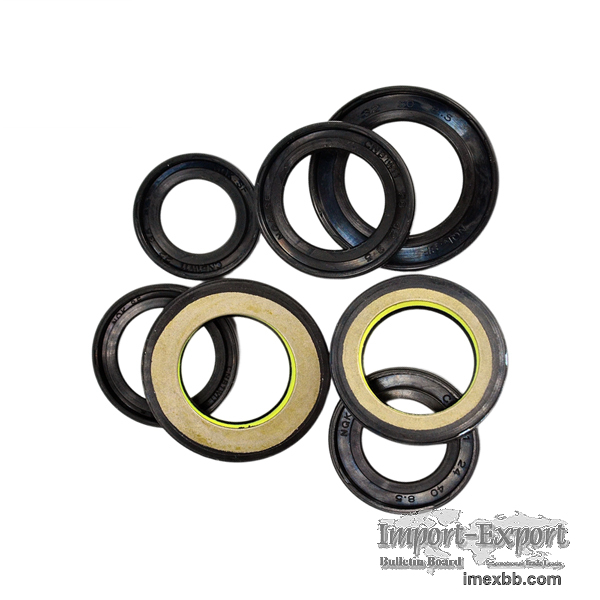 |
 |
Home > Offers to Sell > Others & Excess Inventory > Others
| Contact: | junyingliu |
|---|---|
| Company: | Xingtai Shanfeng special rubber products Co., Ltd |
| Hetou Industrial Zone, Renze District, Xingtai City, Hebei Province | |
| Xingtai City, Hebei | |
| China | |
| Phone: | 18713908608 |
| E-Mail: | |
| Date/Time: | 6/23/23 9:36 GMT |
Made in China Original Power Steering Oil Seal
Power steering systems are essential for smooth and effortless vehicle
maneuverability. However, like any mechanical component, power steering systems
are prone to issues, with oil seal leaks being a common concern. In this
article, we will explore the most prevalent cause of power steering oil seal
leaks, providing valuable insights into the root cause and offering practical
advice for prevention and resolution.
The Leading Cause: Seal Degradation and Wear
The most common cause of power steering oil seal leaks can be attributed to
the degradation and wear of the seals within the system. These seals, typically
made of rubber or elastomer materials, play a critical role in maintaining a
tight seal and preventing oil leakage.
Over time, exposure to high temperatures, hydraulic pressure, and
contaminants can lead to the deterioration of the seals. The continuous
movement and stress placed on the seals during steering maneuvers further
contribute to their wear and eventual failure, resulting in oil leakage.
Common Points of Leakage:
Pump Seal: The power steering pump is a primary area where oil seal leaks
occur. The pump seal, located between the pump housing and the rotating shaft,
is responsible for maintaining a seal to prevent oil leakage. As the pump
operates, the seal may wear out or develop cracks, leading to oil seepage and
visible leaks around the pump.
Rack and Pinion Seals: In vehicles equipped with a rack and pinion steering
system, the seals within the steering rack are susceptible to leakage. These
seals, located at both ends of the rack, are responsible for preventing oil
from escaping. Factors such as age, prolonged use, and exposure to harsh
conditions can cause the seals to degrade and result in oil leaks.
Prevention and Resolution:
Regular Maintenance: Implementing a routine maintenance schedule for the
power steering system is crucial to identify potential issues before they
escalate. Regularly inspecting for signs of oil leakage, such as wetness around
power steering components or low fluid levels, can help detect and address
problems early.
Fluid Quality and Changes: Using high-quality power steering fluid
recommended by the vehicle manufacturer can help minimize seal degradation and
extend their lifespan. Additionally, following the recommended fluid change
intervals helps maintain optimal system performance and prevents contamination
that could contribute to seal deterioration.
Prompt Repairs: If a power steering oil seal leak is detected, prompt
action is necessary. Ignoring the leak can lead to diminished steering
performance, increased wear on other components, and potential system failure.
Seeking professional repair or replacement of damaged seals is essential to
restore the integrity of the power steering system.
Proper Installation and Alignment: When installing or replacing power
steering seals, ensuring proper alignment and installation techniques is
crucial. Following manufacturer guidelines and specifications for seal
installation, torque values, and alignment procedures helps maintain seal
integrity and prevent future leaks.
The most common cause of power steering oil seal leaks is the degradation
and wear of the seals within the system. Regular maintenance, using high-
quality fluid, prompt repairs, and proper installation are essential in
preventing and resolving these leaks. By addressing power steering oil seal
leaks effectively, drivers can maintain the performance, reliability, and
safety of their power steering systems, ensuring a smooth and enjoyable driving
experience.
Minimum Order: 100 pieces
SOURCE: Import-Export Bulletin Board (https://www.imexbb.com/)
Similar Products:Not exactly what you are looking for? Post an Offer to Buy!
![]()
© 1996-2010 IMEXBB.com. All rights reserved.
|
|
|






